|
Aurora Gallery back to spaceweather.com |
| Summary: A coronal mass ejection hit Earth's magnetic field on May 15th, sparking an extreme geomagnetic storm. [See also the April 2005 aurora gallery.] Page 1 | Page 2 | Page 3 | This is Page 4 | Page 5 | Page 6 | Page 7 | Page 8 Got
pictures? Submit
them. |
| Photographer, Location | Images | Comments | |
|
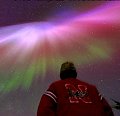
|
Mike Hollingshead,
Blair, Nebraska, USA May. 15 |
#1, #2, #3, #4, more |
This was the best show I have ever seen and I got to see the one in November of 2004. I never thought I'd see anything that cool again. Little did I know it would happen that soon after. These are all shot with a canon digital rebel, 17-40L, at ISO 400 with exposures 10-25 seconds and F4 in most cases. |
|
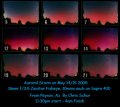
|
Chris Schur,
Payson Arizona, USA May. 14 |
#1, #2, #3, more |
Our robotic Aurora Cam strikes paydirt again! We set the system up at bedtime, with the Kp still under 5, and at 2am the aurora maxed out - all of it captured on film with our Aurora Cam. What a surprise we had when the film was developed the next day! |
|
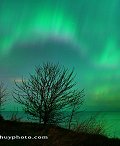
|
Jesús Ojeda,
Saint Francis, Wisconsin, USA May. 15 |
#1, #2, #3, #4, more |
I am still amazed at how bright they were around 8:00 UT time. The entire sky was covered in red and blue. Photo detail: Nikon D70 at ISO 500, Sigma 20mm lens at f/1.8, 10/20 sec exposures. |
|
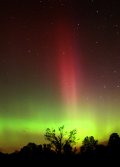
|
Vic & Jen Winter,
Icstars Ranch and Douglas Observatory, near Warrensburg, Missouri, USA May. 15 |
#1, #2, #3, #4, more |
One of the most amazing displays of aurora we have ever seen in Missouri. Streamers and spikes of many colors, dancing green curtains. At one point the aurora extended well past the zenith to the south. Photo details: Nikon D-100 camera and a 16mm and 8mm lens. 30 sec. exposures at f4. |
|
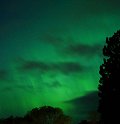
|
Peter Rowell,
Dubuque, Iowa USA May. 15 |
#1, #2, more |
Photos were taken with a Sony MVC-CD400 digital on 8 second exposures. The area of activity in the north became visible when clouds cleared about 1:00 am Central. By 2:00 am activity was in an arc from east to west, and directly overhead. By 3:00 am it was visible in an arc ranging from the southeast, thru south, to the southwest. It became cloudy again shortly after 3:00 am making any further viewing impossible (drats). |
|

|
Jennifer,
Belvidere Illinois, USA May. 15 |
#1, #2, #3, #4 |
Very bright and lots of movement for this area. First time Ive taken pictures of the Auroras! Nikon N50, 800 fil F2.8 for 30sec. |
|
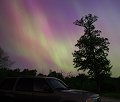
|
Stan Richard,
Saylorville Lake north of Des Moines, Iowa May. 15 |
#1, #2, #3, #4, more |
Incredible pulsations all over the sky, the most beautiful full corona I have seen at this latitude - 41°N, photos taken with Canon Digital Rebel and kit lens, exp 15-30secs |
|
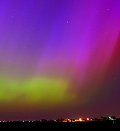
|
Mark Urwiller,
5 miles northwest of Kearney Nebraska May. 15 |
#1, #2, #3, #4 |
All photos were taken with a Canon EOS 10D DSLR with a 17-40mm F4.0L zoom - set at 17mm. The lens was set at f4.5 with exposures of 30 seconds at 400 ISO. |

